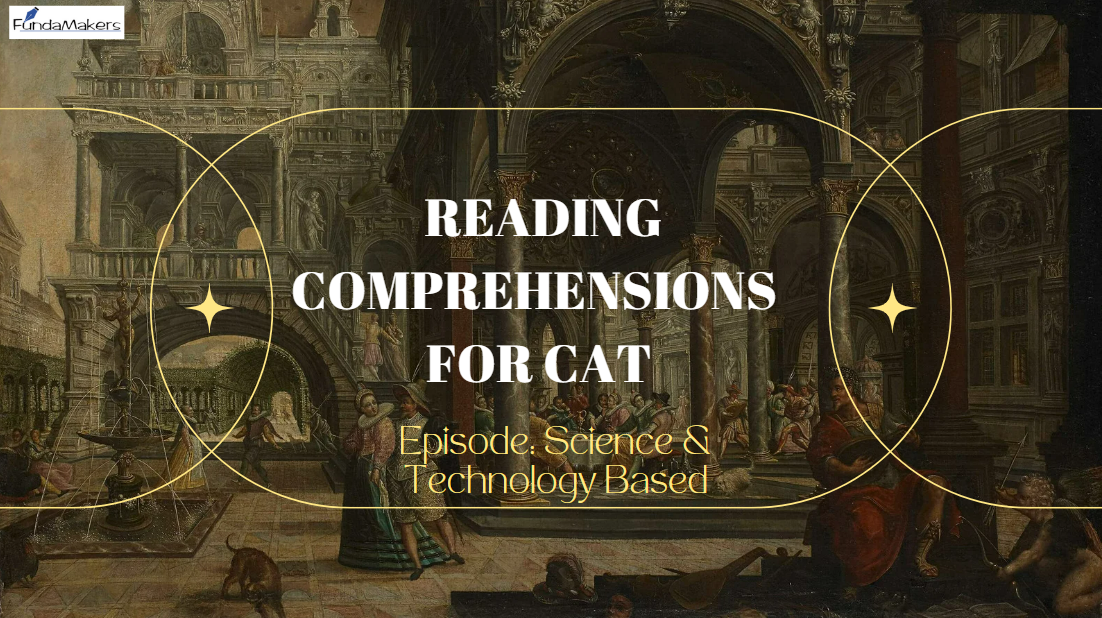Reading passages based on science and technology is crucial for excelling in the CAT exam. These passages not only test your comprehension skills but also assess your ability to grasp complex ideas and analyze technical information, which are essential for the verbal ability and reading comprehension section. Given the increasing emphasis on data-driven and analytical skills in today’s world, there is a high likelihood of encountering science and technology topics in the CAT exam. Familiarity with such passages can enhance your understanding, speed, and accuracy, significantly boosting your score.
For a deeper dive into this topic, please refer to the passages provided below in the blog.
Passage 1.
The butterfly belongs to the order Lepidoptera, which also includes moths. There are various families of butterflies, such as Hedylidae, Lycanidae, Hesperidae, Papilionidae, Nymphalidae, Rionidae, and Pieridae. These families are distinguished by their wing colors and shapes, as well as other physical features. Common characteristics of butterflies include large wings in the adult stage, a life cycle consisting of egg, larva, pupa, and adult stages, and brightly colored and patterned wings used for mating and defense. All butterflies have four wings covered with scales and are mostly active during the day (diurnal).
A butterfly’s body structure is consistent across different families, featuring a head, thorax, and abdomen, each with two legs, totaling six legs. Unlike moths, butterflies have clubbed antennae, while moths have feathery or threadlike antennae. Butterflies can coil their proboscis when not feeding. Their wings are covered with scales that give them their color, and they rest with their wings held perpendicular to the ground.
Questions
- What is the main idea of the passage?
- A. The life cycle of butterflies
- B. The differences between butterflies and moths
- C. The characteristics and structure of butterflies
- D. The various habitats of butterflies
- Which order do butterflies belong to?
- A. Hymenoptera
- B. Coleoptera
- C. Lepidoptera
- D. Diptera
- What is a common feature of all butterflies?
- A. They are all nocturnal.
- B. They have feathery antennae.
- C. They have four wings covered with scales.
- D. They do not go through a pupal stage.
- How do butterflies hold their wings when at rest?
- A. Parallel to the ground
- B. Perpendicular to the ground
- C. Spread out flat
- D. Folded behind their back
Passage 2.
The fundamental contrast between Ethernet and WiFi networks lies not only in their physical connectivity but also in the mode of transmitting binary language. Ethernet relies on converting information into electrical signals for transmission across the network infrastructure. Conversely, WiFi networks utilize radio waves to convey data wirelessly. However, to prevent interference from other radio signals, WiFi operates at frequencies distinct from those commonly used for AM and FM radio transmissions. While car stereos typically pick up signals in the Kilohertz or Megahertz range, WiFi operates within the Gigahertz range, specifically at either 2.4Ghz or 5Ghz frequencies.
1. What is the main idea of the passage?
A) Ethernet networks primarily use radio waves for data transmission.
B) WiFi and Ethernet networks differ in their transmission methods and frequencies.
C) Both Ethernet and WiFi networks transmit data using electrical signals.
D) WiFi networks operate at the same frequencies as AM and FM radio stations.
Correct Answer: B) WiFi and Ethernet networks differ in their transmission methods and frequencies
2. How does information travel through an Ethernet network?
A) Via radio waves
B) Through electrical signals
C) By converting data into binary code
D) By utilizing fiber optics
Correct Answer: B) Through electrical signals
3. Why does WiFi operate at different frequencies than AM and FM radio stations?
A) To increase interference
B) To improve signal strength
C) To avoid interference
D) To align with AM and FM frequencies
Correct Answer: C) To avoid interference
4.What are the frequency ranges for WiFi transmissions?
A) Kilohertz range
B) Megahertz range
C) Gigahertz range
D) Terahertz range
Correct Answer: C) Gigahertz range
Passage 3.
The earliest documented accounts of solar eclipses can be traced back to ancient civilizations like the Babylonians and ancient Chinese, who perceived these events as supernatural occurrences or divine messages. They endeavored to forecast and comprehend eclipses by observing patterns and documenting their appearances. In ancient China, historical records refer to efforts to anticipate eclipses by monitoring celestial bodies’ positions, which laid the groundwork for subsequent eclipse predictions. The ancient Greeks, including influential astronomers like Thales, Anaxagoras, and Hipparchus, significantly advanced our comprehension of solar eclipses. Thales, a Greek philosopher, famously forecasted a solar eclipse in 585 BCE, showcasing the potential of logical reasoning and marking a pivotal moment in eclipse studies. Hipparchus, renowned as one of antiquity’s foremost astronomers, devised a mathematical approach to predict eclipses, contributing substantially to the field and facilitating more precise eclipse forecasts in the future.
Questions
1. What is the main idea of the passage?
A) Ancient civilizations viewed solar eclipses as supernatural phenomena and endeavored to predict them through observations and recordings.
B) The ancient Greeks, particularly Thales and Hipparchus, made significant contributions to understanding and predicting solar eclipses.
C) Solar eclipses have been observed since ancient times, with civilizations like the Babylonians and Chinese interpreting them as divine messages.
D) Both ancient Chinese and Greek cultures attempted to predict solar eclipses, with varying degrees of success.
Correct answer: B) The ancient Greeks, particularly Thales and Hipparchus, made significant contributions to understanding and predicting solar eclipses.
2. How did ancient Chinese attempt to predict eclipses?
A) By interpreting eclipses as divine messages from the gods.
B) Through observations of celestial body positions.
C) By recording patterns of eclipses.
D) By using mathematical models.
Correct answer: B) Through observations of celestial body positions.
3. What was Thales’s contribution to eclipse studies?
A) He developed a mathematical model to predict eclipses.
B) He interpreted eclipses as omens or messages from the gods.
C) He correctly predicted a solar eclipse in 585 BCE.
D) He recorded patterns of eclipses in ancient China.
Correct answer: C) He correctly predicted a solar eclipse in 585 BCE.
4.What was Hipparchus’s achievement in the field of astronomy?
A) He correctly predicted a solar eclipse in 585 BCE.
B) He interpreted eclipses as supernatural events.
C) He developed a method to predict eclipses using a mathematical model.
D) He observed patterns of celestial bodies to forecast eclipses.
Correct answer: C) He developed a method to predict eclipses using a mathematical model.
Test your Caliber with us!
FundaMakers provide a series of RCs, and previous year questions based on RCs on our site. Tap on ” CAT Question Bank” and visit our Question bank section perfectly tailored for CAT aspirants.
Visit the ink below to practice reading comprehensions based on Law & Literature Movement:





